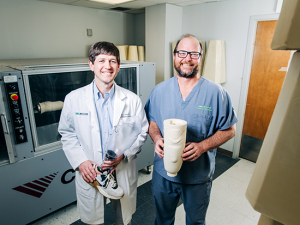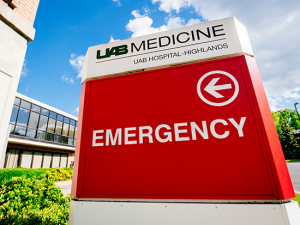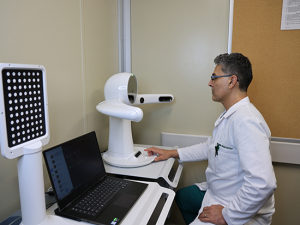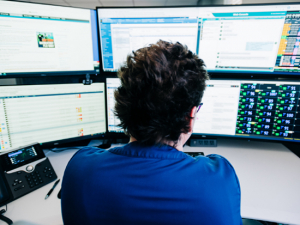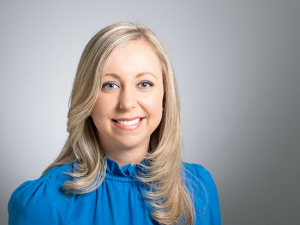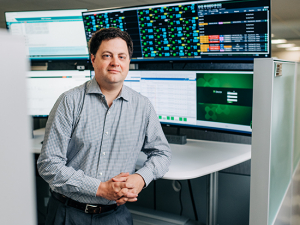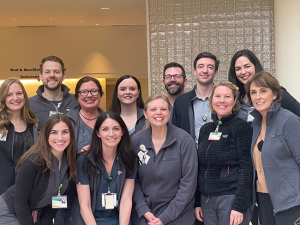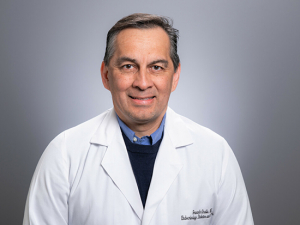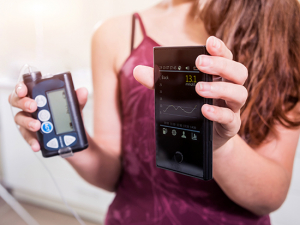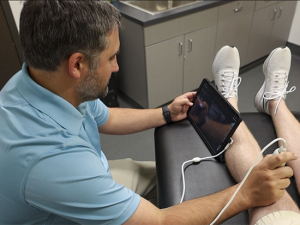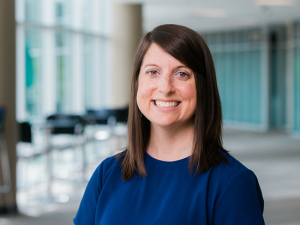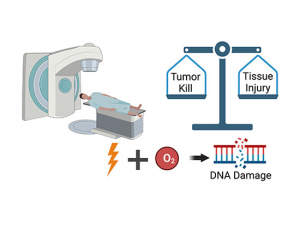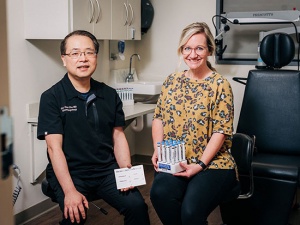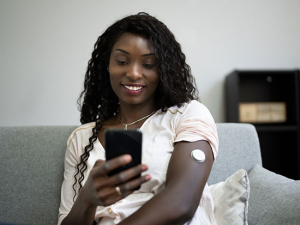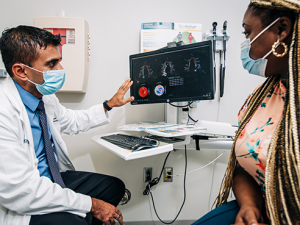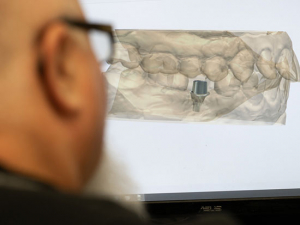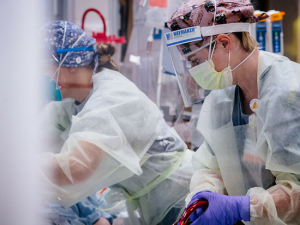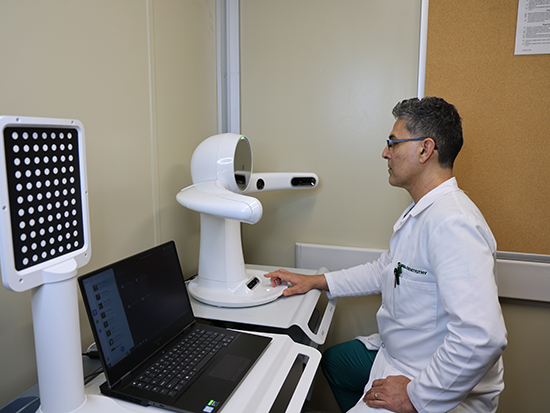 Ramtin Sadid, DDS, M.S., leader of the UAB Division of Prosthodontics, demonstrates the RAYface scanner at the UAB Prosthodontics Clinic, which uses six high-resolution cameras to record three-dimensional images of the patient’s face. Photo by Mary SimsSome 120 million Americans are missing a tooth, and more than 36 million do not have any teeth, according to the American College of Prosthodontists — numbers that are expected to grow over the next two decades with the aging population. Tooth loss can drain a patient’s confidence, but it also has biological effects, including bone loss, shifting of remaining teeth, change in bite and potential temporomandibular joint (TMJ) disorders, and significant nutritional changes that can lead to potential obesity, diabetes, and gastric disorders.
Ramtin Sadid, DDS, M.S., leader of the UAB Division of Prosthodontics, demonstrates the RAYface scanner at the UAB Prosthodontics Clinic, which uses six high-resolution cameras to record three-dimensional images of the patient’s face. Photo by Mary SimsSome 120 million Americans are missing a tooth, and more than 36 million do not have any teeth, according to the American College of Prosthodontists — numbers that are expected to grow over the next two decades with the aging population. Tooth loss can drain a patient’s confidence, but it also has biological effects, including bone loss, shifting of remaining teeth, change in bite and potential temporomandibular joint (TMJ) disorders, and significant nutritional changes that can lead to potential obesity, diabetes, and gastric disorders.
Tooth restoration is the specialty of prosthodontists, dentists who complete an extra three years of training to become experts in this field. That training includes extensive experience in esthestics dentistry and oral rehabilitation using a patient-centered treatment approach, says Ramtin Sadid, DDS, M.S., a practicing prosthodontist and leader of the UAB Division of Prosthodontics.
Sadid is an expert in digital dentistry — a sub-field that was originally developed in the early 1970s but did not really start to gain momentum until the middle of the last decade, he says. New technologies are improving the treatments that prosthodontists can offer patients, Sadid explains. Here are some of the most promising, each of which is being used or tested in the newly renovated UAB Prosthodontics Clinic.
Digital dentures: “Digital technology allows prosthodontists to design and fabricate dentures faster and at higher quality,” Sadid said. “Studies have shown that you get a better fit than with traditional dentures when appropriate digital workflows are used.” The UAB Prosthodontics Clinic uses a variety of techniques to fabricate temporary and final prostheses, including 3D printing and milling machines, Sadid says.
Implant planning: “Detailed imagery of the patient’s mouth allows for proper positioning of the implants, especially for complicated cases and particularly for full-mouth rehabilitation, and prosthetically driven implant planning is the key to success of the treatment outcome” Sadid said.
Diagnosis: “New generations of dentists are more keen to work on laptops than in the lab on wax,” Sadid said. “Instead of making a conventional impression of the teeth in wax and working from that for diagnosis, dentists can use digital images to perform diagnostic procedures on a screen.”
Cone beam CT for crown lengthening: “Digital technology has helped with the incorporation of cone beam computed tomography, or CBCT,” Sadid said. CBCT has various uses, he noted. One is to design virtual guides that help with crown lengthening, “which is surgical removal of bone to improve esthetics.”
Face scans: The RAYface scanner at the UAB Prosthodontics Clinic uses six high-resolution cameras to record three-dimensional images of the patient’s face. The scanner is used for facially driven treatment planning to ensure that new teeth not only fit well in the gums but with the person’s entire appearance, especially when smiling. “The RAYface also is used to fabricate maxillofacial prosthetics — a subspecialty of prosthodontics — for patients who have lost part of their face due to cancer,” Sadid said.
Jaw tracking: One of the latest technologies, still under research at the School of Dentistry and other leading institutions, is the jaw tracking device, or computerized mandibular scan. “Basically, they provide information on the range of motion of the temporomandibular joint, which may be helpful diagnostic information for oral rehabilitation,” Sadid said. This information may help dentists select the most appropriate treatment to correct TMJ pain and other issues.”
